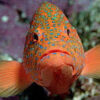Exploring the Image of the Dragon in Chinese Military and Imperial Attire
The dragon is one of the most powerful and revered symbols in Chinese culture, representing imperial power, strength, and divine authority. Its importance is not limited to mythology, but extends into various aspects of Chinese history, including the attire of both the military and the imperial court. Throughout China’s imperial dynasties, the dragon played a key role in distinguishing the wearer’s rank, authority, and their connection to the divine. Whether in military uniforms, royal regalia, or ceremonial dress, the dragon has left an indelible mark on the cultural and historical fabric of China.
In this article, we will explore the fascinating role of the dragon in Chinese military and royal clothing, examining how this mythical creature was woven into the fabric of power, identity, and status. From the grandeur of the emperor’s robes to the symbolic representations in the military uniform, the dragon’s presence highlights the deep connection between attire, symbolism, and authority in Chinese culture.
The Dragon as a Symbol of Imperial Authority
To understand the significance of the dragon in military and imperial attire, it is essential to recognize its role as a symbol of the emperor’s divine authority. In Chinese culture, the emperor was considered the “Son of Heaven,” with a direct link to the divine forces of the universe. The dragon, as a supernatural and cosmic creature, was believed to be the guardian of heaven and earth, and by wearing the image of the dragon, the emperor conveyed his divine right to rule.
The dragon also represented the emperor’s unique status. The imperial throne, the most sacred seat of power in China, was often adorned with dragon motifs to symbolize the emperor’s control over the land and people. This divine connection was reinforced through clothing, where the dragon appeared in robes and garments meant for the emperor and his court.
The Emperor’s Dragon Robes
Among the most iconic examples of dragon imagery in imperial China were the robes worn by the emperor. The emperor’s robe was typically decorated with a pattern of five-clawed dragons, which signified his supreme position in the Chinese hierarchical structure. These robes were not merely for aesthetic purposes; they were deeply symbolic, signifying the emperor’s authority, the mandate of heaven, and the celestial order that placed him as the ruler of the earthly realm.
The Five-Clawed Dragon: A Mark of Imperial Status
In Chinese tradition, dragons are depicted with varying numbers of claws, and the number of claws on a dragon served as an important indicator of the wearer’s rank. The five-clawed dragon was reserved exclusively for the emperor, distinguishing him from other members of the royal family and nobility. Emperors wore robes with intricate designs that featured this five-clawed dragon, often made from luxurious silks and gold thread, which signified both their connection to heaven and their supreme power.
The dragon embroidered onto the emperor’s robes was believed to bestow divine protection, ensuring that the emperor’s rule was secure. The dragon was often accompanied by other auspicious symbols, such as the phoenix (symbolizing the empress) and clouds or waves (representing heaven and the divine realm). This visual representation of the emperor’s celestial status reinforced the belief that he was the mediator between the gods and the people.
The Role of Color in Dragon Robes
Color played an important role in distinguishing the status of the emperor. Yellow, the color most associated with the emperor, was commonly used in dragon robes. Yellow was considered the most auspicious color, symbolizing the earth and the center of the universe, and was reserved exclusively for the emperor. In this context, the five-clawed dragon embroidered on the yellow robe reinforced the emperor’s role as the central figure in Chinese society.
Other colors, such as red and green, were used in the robes of the imperial court and nobility, though the dragon’s presence was not as dominant or intricate as in the emperor’s attire. These garments often featured dragons with fewer claws (usually four), which were considered appropriate for those of high rank but not as exalted as the emperor.
The Dragon in Royal Ceremonial Attire
Beyond the emperor’s everyday attire, dragon imagery was also incorporated into the royal ceremonial garments worn during important state functions, festivals, and rituals. These garments, made from the finest silks and brocades, were worn during significant events, such as the emperor’s coronation, marriage, and annual rites to the gods.
Dragon Robes for the Empress
The empress, the primary female figure in the imperial court, was also associated with the dragon, though her garments often incorporated the phoenix, the complementary symbol to the dragon. While the dragon symbolized the emperor’s power, the phoenix represented the empress’s grace and virtue. The phoenix and dragon motif, when paired together, represented the harmony of the imperial couple, whose union was seen as essential for the prosperity of the empire.
The empress’s dragon robes were also elaborate, often made from rich fabrics embroidered with dragons and phoenixes. These robes signified the empress’s role as the ruler’s consort and reinforced her place within the imperial family’s hierarchy. While her attire did not feature the five-clawed dragon of the emperor, the presence of the dragon in the design further emphasized the emperor’s divine protection over his household and empire.
Imperial Dragon Hats and Headdresses
In addition to robes, the emperor and other members of the royal family wore ceremonial hats and headdresses adorned with dragon motifs. The dragon was often featured in the design of the emperor’s crown, which symbolized his ruling authority over all of China. These crowns, often made of gold or jade, were intricately decorated with images of dragons, signifying the emperor’s connection to the divine and his earthly power.
For example, during the emperor’s formal attire for the Dragon Throne ceremony or the ancestral worship ceremonies, he would wear a headdress crowned with dragons, reinforcing his sacred role in Chinese society. These dragon-emblazoned hats were not just ceremonial—they were vital to the performance of state rituals and to maintaining the spiritual connection between the emperor and the heavens.
The Dragon in Military Attire
Just as the dragon was embedded in the imperial robes, it also played an important role in the military uniforms and battle attire of Chinese generals and soldiers. The military, tasked with defending the empire from external threats, required symbols of strength and invincibility, and the dragon provided just that.
Military Flags and Standards
The dragon was often depicted on military flags and standards, designed to rally the troops and inspire courage. These flags, sometimes referred to as “dragon banners,” were used to symbolize the imperial army’s connection to the emperor and the divine protection it enjoyed. Just as the emperor wore the dragon as a sign of his authority, the military used the dragon as a symbol of its unyielding strength and resolve in battle.
In times of war, the presence of the dragon on the battlefield signified the emperor’s support and divine favor for the military. The soldiers believed that their victories were assured under the dragon’s watchful eye, and the symbol instilled a sense of unity and purpose within the ranks. The military commanders, particularly those in high positions, often wore uniforms decorated with dragon symbols to emphasize their elevated status and divine protection.
Dragon-Embroidered Armor and Weaponry
The dragon also appeared in the armor and weaponry of military leaders. In ancient China, high-ranking officers and generals often wore armor decorated with intricate dragon designs, symbolizing their martial prowess and their closeness to the emperor. This armor, often made of metal and layered with leather, featured embroidered dragons that were thought to bestow strength and invulnerability upon the wearer.
In addition to armor, weapons such as swords, daggers, and spears were frequently engraved with dragon motifs. These dragon-headed weapons were considered to be imbued with supernatural power, capable of ensuring the wielder’s victory in battle. The dragon on these weapons symbolized the emperor’s power and the protection of the gods, underscoring the military’s role in preserving imperial authority.
The Dragon in Modern Military and State Functions
Though the imperial system ended in 1912 with the fall of the Qing Dynasty, the image of the dragon remains an integral part of Chinese military and state functions. The modern Chinese government continues to utilize dragon imagery in various forms, albeit in a more symbolic and nationalistic manner.
National Parades and Military Ceremonies
In modern China, dragon imagery is prominently displayed during state functions, military parades, and national celebrations, such as the annual National Day celebrations. While the imperial dragon robes have been replaced with more modern attire, the dragon continues to be an important symbol of strength and unity. The Chinese military, in particular, incorporates the dragon in ceremonial events, where it signifies the nation’s power and resilience.
The Dragon in Chinese Military Uniforms Today
While traditional dragon-adorned military uniforms no longer exist, the dragon remains an important national symbol. In military ceremonies and state functions, banners, insignia, and other symbols featuring the dragon continue to be used to represent the strength and unity of the nation.
Conclusion
The image of the dragon has played an important role in the design of Chinese military and royal attire for centuries. From the emperor’s robes to the ceremonial uniforms of military leaders, the dragon has served as a symbol of divine authority, strength, and protection. Its presence in military and imperial attire underscores the deep connection between clothing, symbolism, and political power in Chinese culture. Today, while the style and function of these garments have evolved, the dragon’s enduring presence continues to remind the Chinese people of their rich cultural heritage and the lasting power of this mythical symbol.


